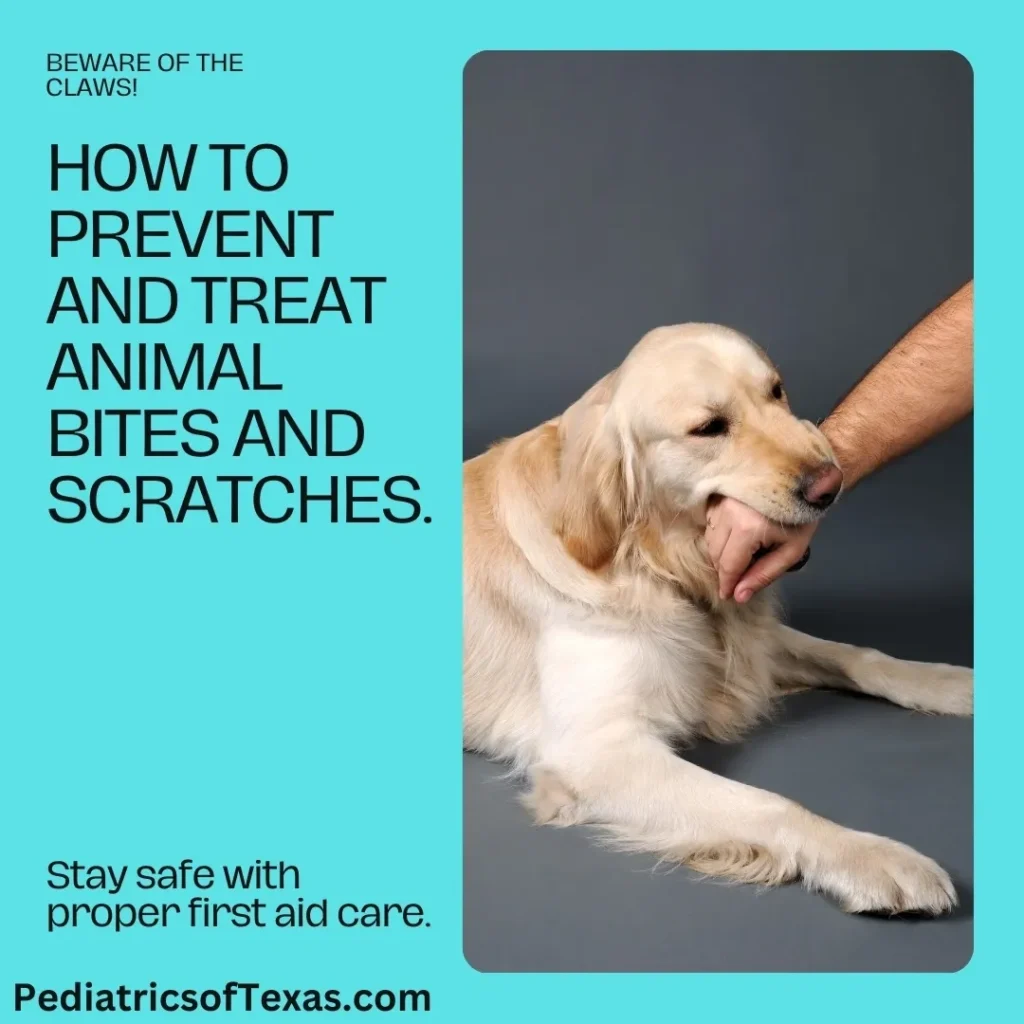
Animal Bites and Scratches
Animal bites are most likely to come from pets and other animals your child knows but occasionally will be inflicted by strange or wild animals that your child encounters. These wounds tend to be superficial or minor but at times may cause serious injury that require immediate medical attention. In addition to the physical aspects, bites can also lead to emotional problems.
Any wound that penetrates the skin should be evaluated by your pediatrician. This may be to stop bleeding with suturing. In addition, most cats and some dogs harbor a germ in their mouths called Pasteurella multocida which may lead to a serious infection called cellulitis – this must be treated with the appropriate antibiotic which your doctor will prescribe. Also, your doctor will review your tetanus vaccination record to ensure adequate protection as this disease can be spread via animal bites. In the event of a bite from a wild animal, risks of rabies must be assessed. Although exceedingly rare, rabies is also VERY serious. Most family pets and domestic animals have been routinely vaccinated against rabies and pose no significant risks. The risk from wild animal bites depends usually on the type of animal and the circumstances surrounding the bite so your pediatrician will also review this information with you. Never assume that a wild animal carries rabies naturally – they don’t. The biting animal is sick itself with rabies that it acquired from another sick animal. However, with any biting animal, whether domesticated or wild, it should be captured (if possible) and observed for a period of time for signs of rabies infection. Capture of wild animals should be done ONLY by health department officials and not attempted by you.
Like any wound, a bite can become infected within a few days so if the area becomes red, swollen, warm to the touch, has spreading red streaks, or draining pus, call your pediatrician at once.
Scratches are more typical with cats and are usually superficial but still may require medical attention. In addition to Pasteurella that can be spread with a scratch, other infections are also possible, in particular Cat Scratch Fever, caused by the bacterium Bartonella henselae. This is one of the most common causes of chronic lymphadenopathy in kids and is often seen in the lateral neck. Fortunately, once identified, it is easily treated.
It is essential to teach your child animal safety measures. These include:
· Avoid wild animals and domesticated animals they don’t know
· Teach them how to approach or greet animals they are likely to encounter in the neighborhood
· Teach them to NOT put their face close to an animal
· Warn your child to stay away from yards where there is a animal that seems unfriendly
· If approached or chased by a strange animal tell your child to NOT RUN but to back away slowly
· Never tease or torment an animal and don’t interrupt the animal while it is eating or sleeping
